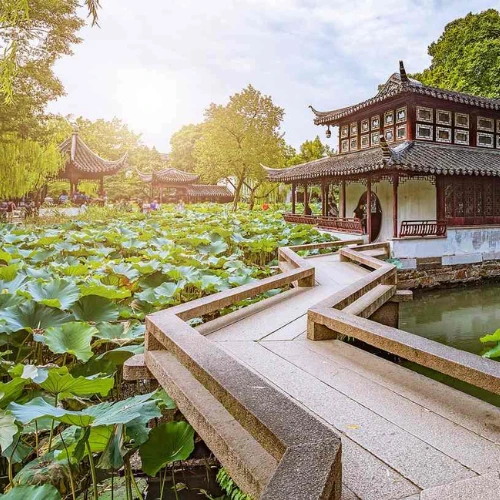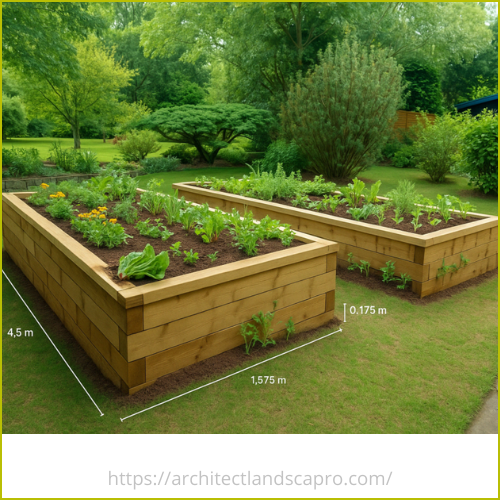Looking to bring serenity, harmony, and timeless beauty to your outdoor space? A China Garden, inspired by traditional Chinese landscaping, blends nature, architecture, and symbolism to create a peaceful retreat. Whether you have a courtyard or a spacious yard, you can adapt this ancient garden style to your modern home.
What Is a Traditional Chinese Garden?
Traditional Chinese gardens are designed to reflect the balance between humans and nature. Originating from classical China (notably in Suzhou), these gardens are structured to offer a spiritual escape, blending plants, rocks, water, and architecture into one harmonious composition.
Key principles include:
- Balance between elements (Yin & Yang)
- Symbolic arrangements rather than strict symmetry
- Scenic views framed through windows or paths

Key Elements of a China Garden
| Element | Purpose | Notes |
|---|---|---|
| Water features | Symbolize life and reflection | Ponds, streams, or miniature lakes |
| Rocks & stones | Represent mountains and strength | Often arranged in sculptural groups |
| Pavilions | For rest and contemplation | Made of wood, often open-air |
| Winding paths & bridges | Encourage slow movement | Usually curved, not straight |
| Walls with windows | Frame specific views | Called “moon windows” or “leak windows” |
💡 Pro tip: Design your garden as a series of scenes, like a moving painting.
Plants Used in Traditional China Gardens
Plants are chosen for seasonal interest, fragrance, and symbolic value.
Popular species:
- Bamboo – resilience and flexibility
- Pine trees – longevity and strength
- Lotus – purity and rebirth
- Peonies – wealth and honor
- Plum blossoms – perseverance through adversity
- Wisteria, Camellias, Osmanthus – seasonal fragrance and bloom
Feng Shui and Symbolism – China Garden
Chinese gardens are deeply tied to Feng Shui principles, aiming to enhance positive energy (Qi) through careful layout.
- Water = wealth
- Rock = stability
- Plants = health and vitality
- Curved paths = slow, gentle energy flow
- Avoid sharp corners or straight lines that “cut” the energy
Famous China Gardens You Can Visit
If you want real-world inspiration, visit:
- The Humble Administrator’s Garden (Suzhou, China)
- Yuyuan Garden (Shanghai)
- China Garden in Zurich (gifted by Kunming)
- Chinese Garden at Huntington Library (California)
These sites reflect classical garden principles adapted to public spaces.
How to Create Your Own Chinese Garden
Even in a small yard, you can evoke the China Garden spirit:
- Choose a focal point – a small pond, rock arrangement, or pavilion
- Add natural elements – bamboo fences, curved pathways, stone lanterns
- Use symbolic plants – focus on 4–5 meaningful species
- Design for flow and surprise – create areas hidden from first glance
- Incorporate Feng Shui – place water in the southeast, add balance
Design Ideas and Inspiration
- Mini pond with floating lotus flowers
- Moon gate with stone pathway
- Pavilion surrounded by bamboo and plum blossoms
- Bridge over a koi pond with carved rock features

Final Thoughts – China Garden
The China Garden is more than a landscape—it’s an experience. By blending architecture, nature, and symbolism, you create a peaceful escape that honors tradition and invites reflection. Whether you design a full-size garden or a small courtyard, this timeless style brings balance and beauty to any outdoor space.
👉 Want more cultural garden ideas?
Explore our 7 Ways to Transform Your Outdoor Space or Garden with Solar Lighting
🌿 Ready to start landscaping?
Read our Mulberry Tree Guide to improve your garden layout from the ground up.
📚 Learn More about China Garden
For in-depth design principles, visit The Classical Gardens of Suzhou – UNESCO

